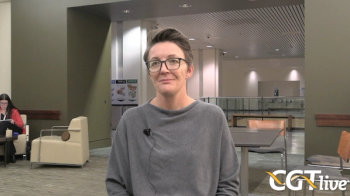
Levi Gray-Rupp, PhD, on Using Integrated Circuit T-Cells Against Solid Tumors
The senior director of immunology at Arsenal Bio discussed advantages of ICTs and the company’s clinical trial in ovarian cancer.
“Integrated circuit T-cells are cells that have a single transgene that we integrate using a non-viral CRISPR-based delivery method to a specific locus in the genome. And then that transgene encodes all of the different elements that we use to reprogram the cells to overcome various barriers to activity within solid tumors. And we really have a wide toolkit of technologies that we can deploy to address various challenges within solid tumors.”
Arsenal Bio’s answer to challenges in treating solid tumors is thecompany’s integrated circuit T-cell (ICT) platform, which is being used in 1 current clinical trial and multiple preclinical programs. Preclinical and clinical data on ICTs were presented at the
CGTLive spoke with Gray-Rupp to learn more about ICTs, their properties, and their potential advantages in targeting and treating tumors. Some advantages include enabling a larger payload with non-viral, CRISPR delivery compared to viral delivery, and 2 shRNA modifications that are designed to reduce apoptosis in the tumor microenvironment and increase cell persistence, expansion, and antitumor activity.
He also touched on the clinical-stage ICT program in Arsenal’s pipeline, AB-1015, which is being evaluated in patients with platinum-resistant epithelial ovarian cancer in a currently enrolling phase 1 trial (NCT05617755) that dosed its first patient in January 2023. He also noted Arsenal’s second ICT program, AB-2100, which the company is planning to initiate a clinical trial for patients with kidney cancer in 2024.
REFERENCE
Grap-Rupp L. Integrated Circuit T cells (ICTs) for solid tumors. Presented at: WOCTC; April 25-26; Boston, Massachusetts.
Newsletter
Stay at the forefront of cutting-edge science with CGT—your direct line to expert insights, breakthrough data, and real-time coverage of the latest advancements in cell and gene therapy.










































